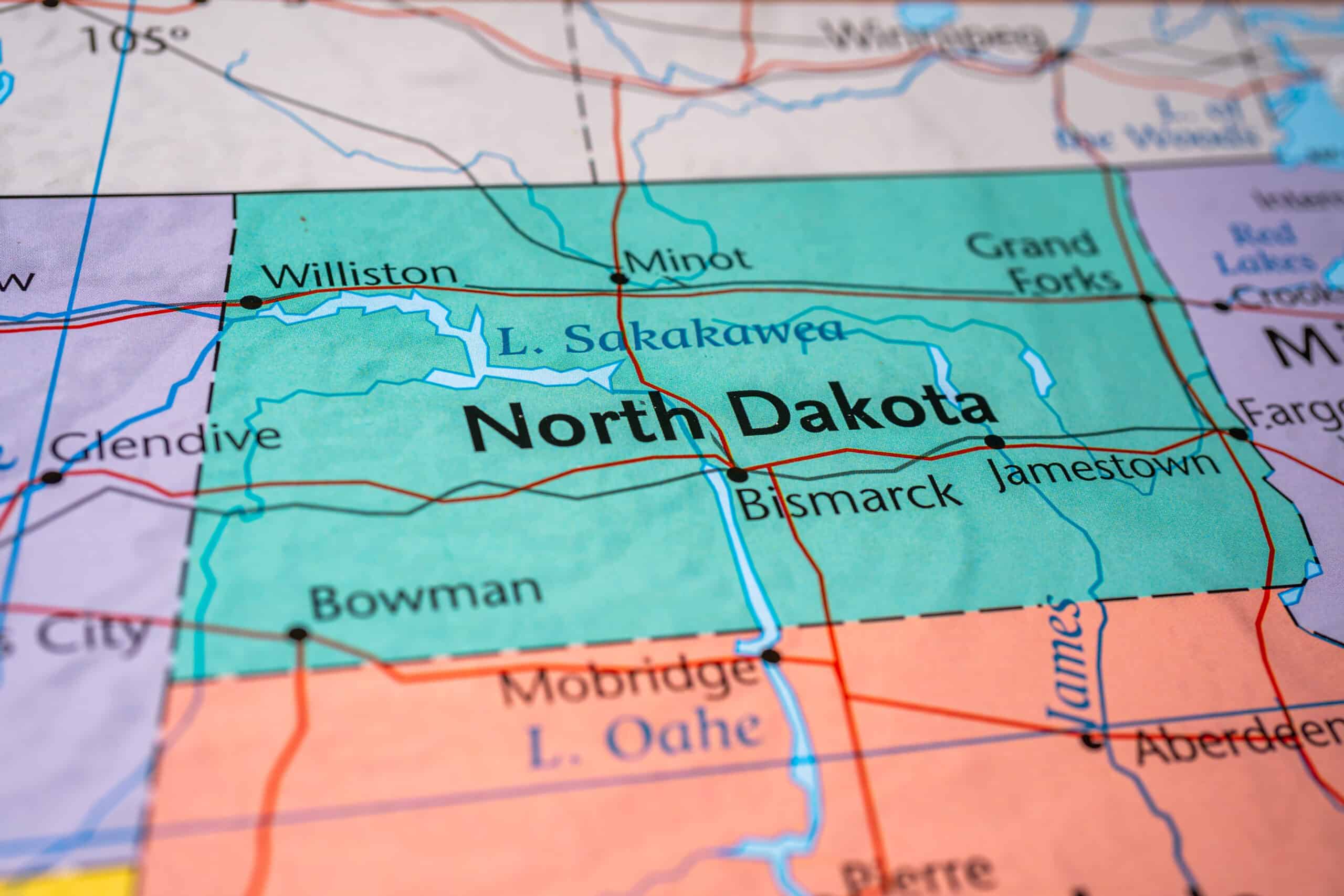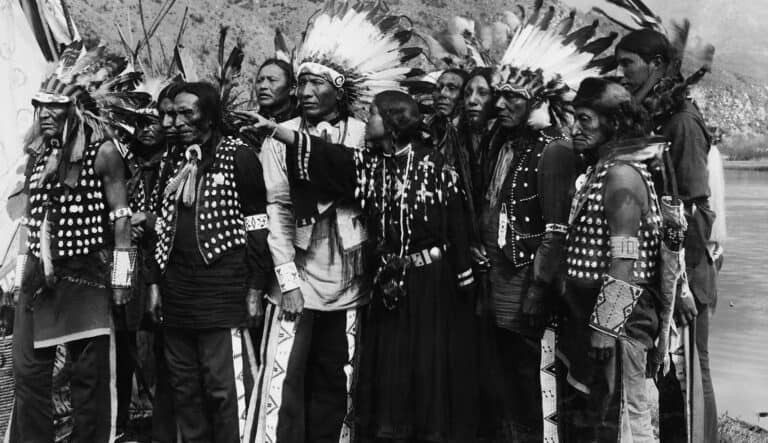North Dakota, often recognized for its expansive farmlands and rich natural resources, harbors a legacy of creativity and innovation. This state, stretching from the picturesque Badlands to the banks of the Red River of the North, has been the birthplace of several products that have become staples across America.
Its residents have harnessed their ingenuity to transform simple ideas into robust ventures, leaving an indelible mark on the market.
Among the fields of wheat, corn, and soy, along with the bustle of cattle ranching and energy production, the spirit of invention thrives.
North Dakota’s innovators have contributed enormously to daily life in the United States, affecting how people start their day, undertake their work, and manage their households.
While the list is long and diverse, several noteworthy inventions and marketing successes trace their origins back to this northern state.
Mr. Bubble: A Legacy in Bath Time Fun
Originator: Harold Schafer initiated the concept of an affordable bubble bath for children and established the brand through his enterprise, the Gold Seal Company.
Innovation: Moving away from exclusive outlets, Schafer’s vision was to make bubble bath an accessible pleasure, available in ordinary drugstores and grocery stores.
Price Adjustment: Schafer reduced the price from an initial 59 cents to a more budget-friendly 39 cents, swiftly capturing the market with this strategic move.
Marketing Strategy:
- Launched with vibrant, comical adverts featuring the Mr. Bubble character.
- Strived to instill joy in the routine of bathing for children with the creation of Mr. Bubble.
Cultural Impact:
- Recognized officially by North Dakota in August 2011 with a dedicated “Mr. Bubble Day.”
Ownership: The Village Company is the current owner of the Mr. Bubble brand.
Global Reach: Continues to be a beloved product in households across the world for bath time entertainment.
Founder’s Vision: Ed Schafer recounted his father’s dedication to making bath time entertaining for children, highlighting that Mr. Bubble was a direct extension of such family-oriented playful endeavors.
Current Status: Stands as a testament to ingenuity, Mr. Bubble remains a cherished addition to bath time routines globally, sustaining its popularity through generations.
Cream of Wheat
In 1893, during a significant economic downturn known as the Panic of 1893, the Diamond Milling Company in Grand Forks struggled to remain operational.
Tom Amidon, the head miller, and a Scottish immigrant, presented an innovative idea to the mill’s proprietors, Emery Mapes, George Bull, and George Clifford. Amidon suggested selling a porridge made from wheat middlings—the nutrient-dense core of the wheat kernel often disregarded in flour production, which his wife prepared for their breakfast.
Origins and Rise to Popularity:
- Inception: Amidon’s homemade porridge is produced commercially.
- Initial Interest: The first shipment to New York brokers includes ten cases; the immediate success leads to a larger order.
- Production Shift: The mill fully transitions to Cream of Wheat manufacture due to growing demand.
- Expansion: The company relocates to Minneapolis and is renamed The Cream of Wheat Company.
Development and Ownership:
- Flavor Expansion: Over time, the company introduces various flavors and instant preparation varieties.
- Corporate Changes:
- 1961 to 2000: Nabisco takes ownership.
- Post-2000: The brand is acquired by Kraft Foods.
- Presently: Cream of Wheat is managed by B&G Foods.
This porridge, initially transported alongside a regular flour shipment, found favor with the brokers, leading to an unexpected surge in popularity. The ensuing demand catalyzed Cream of Wheat’s journey from a miller’s personal breakfast to a nationally recognized brand.
The Evolution of the Film Roll Camera
In the early 1880s, a significant advance in photography was on the horizon, thanks to David Henderson Houston, a settler of the Dakota Territory. Houston, originally from Scotland and having relocated to the U.S. in his infancy, devised a pioneering camera system at the age of 40 after moving to a place near Hunter.
Houston’s original and notable contribution was a camera designed to utilize a roll holder—a concept he patented in 1881.
Key Milestones:
- Patent Filing: Houston’s initial patent for a “roll holding camera” was registered prior to the invention of roll film.
- Houston’s Vision: Recognizing future developments, he envisioned the utility of a camera that would use roll film, despite no existing technology for the film during that time.
- George Eastman’s Involvement: Eastman later developed a paper roll film compatible with Houston’s camera spool. Houston filed for an improved patent in 1886, which Eastman adopted for the Kodak box camera.
- Financial Outcome: For his invention, Houston received $5,000—an impressive sum equivalent to over $145,000 today—and ongoing monthly royalties.
- Legacy of Invention: Houston didn’t stop with his initial design; he obtained 21 more patents related to photographic equipment, which included advancements in folding, panoramic, and magazine-loaded cameras.
- Naming of Kodak: The iconic Kodak brand name is also tied to Houston, who ingeniously rearranged the letters of “Dakota” and appended a “K” to create the now-famous name.
Evolution of the Skid Steer Loader
The skid steer loader, a mainstay in construction and agriculture, owes its existence to the ingenuity of the Keller brothers. During the 1950s, these innovative siblings ran a welding and repair business in Minnesota, laying the groundwork for a machine that would revolutionize material handling.
Responding to a local turkey farmer’s unique requirement, the Kellers created an original three-wheeled device in 1957 that could deftly navigate the narrow confines and delicate flooring of a barn.
The success of this invention attracted the attention of Melroe Manufacturing Company in North Dakota, prompting a partnership and acquisition of the machine’s design.
By 1960, Melroe unveiled a significant advancement with the introduction of the four-wheeled M400, marking the debut of the first genuine skid steer loader.
This machine was swiftly followed by the M440, branded with the now-iconic “Bobcat” moniker, symbolizing reliability and toughness. The Bobcat brand rose swiftly in the hierarchy of compact construction equipment.
As the company matured, various ownerships ensued before becoming part of Doosan Infracore, now identified broadly as Doosan Bobcat, headquartered in West Fargo.
Celebrations echoed through the firm’s halls in July 2014 as they commemorated the remarkable milestone of manufacturing the millionth loader.
- Origins: Conceived by the Kellers in the 1950s for a turkey barn’s specific needs
- Capability: Designed to efficiently maneuver and operate within compact spaces
- First Model: M60 loader laid the basis for subsequent designs
- Bobcat Trade Name: Adopted in 1962, symbolizing the loaders’ agility and durability
- Milestones:
- Launch of M400 in 1960, recognized as the first true skid steer loader
- Celebrated production of one million loaders in 2014
- Current Ownership: Doosan Bobcat, reflecting a legacy of continuous innovation and leadership in the industry
Clothes Dryer
The invention of the automatic clothes dryer emerged from a need for a more convenient way to dry clothing during the harsh winters of North Dakota.
J. Ross Moore, observing his mother’s difficulties with hanging laundry to dry in the biting cold, sought to create a solution. He first addressed the issue with a makeshift gasoline-powered washer and a drying room. His efforts eventually led to a more sophisticated design.
Throughout three decades, Moore dedicated himself to developing a practical and efficient method for drying clothes. His persistence resulted in the patenting of an electric dryer in 1936.
By 1938, this innovation had evolved into a drum-type model, which Hamilton Manufacturing marketed with the name “June Day.”
Today, this appliance has become an indispensable convenience in numerous homes across the United States, demonstrating the enduring impact of Moore’s dedication to easing domestic chores.
License Plate Validation Stickers
In the 1970s, an employee from the North Dakota Department of Motor Vehicles, working within the computer division in Bismarck, conceptualized validation stickers for vehicle license plates. These stickers, also known as tags, were intended to adhere to license plates using a special adhesive film.
The implementation of these stickers meant that vehicle owners no longer needed to replace their entire license plates annually; instead, they could update their registration with a new sticker.
Here are some key points about validation stickers:
- Inventor: A North Dakota DMV employee
- Concept: A sticker system to validate vehicle registration
- Adoption: Rapid nationwide and global usage
- Convenience: Reduced the need for new plates with each registration
- Production: Approach to 3M for manufacturing
These stickers represent a significant convenience as they eliminate the necessity for annual plate replacement. Despite their cost, which can vary based on vehicle value and type, they provide a highly efficient solution for affirming a vehicle’s registration status.
The innovator’s pride in this development is noted, having been concisely chronicled on his memorial in Bismarck’s Fairview Cemetery.










